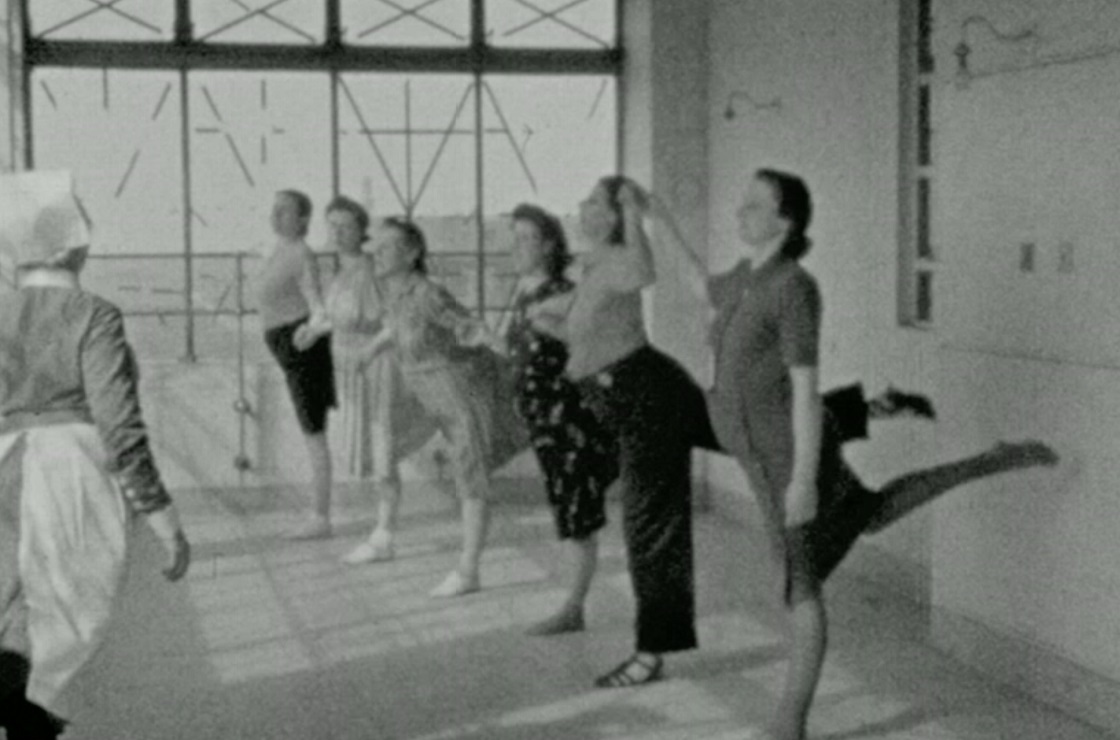CHOTS (Centre for the History of the Sciences) and CiSOR joined forces in October to put on the Canterbury Festival’s only 18-rated event. The event was curated by Filippo Guizetti, one of our Science Communication masters students, who invited Dr Jesse Olszynko-Gryn from the University of Cambridge to show some of the medical films he has been studying as part of his research project Gestation to Reproduction.
What we saw was both visually and scientifically extraordinary.
Movie-makers began experimenting with special effects as soon as cameras were invented, and one result of this was the pioneering use of stop-motion to capture biological-time events. We began with a 1924 down-the-microscope film of a developing axolotl, from single cell to early embryo. Amphibians were a popular choice for early developmental biology, and this film, Gestation of the Ovum, was at the cutting edge of research as well as of visualisation – likely shown only to university students. In a nice visual continuity (as Geraldine Travers astutely pointed out), the film finished with a bean-shaped embryo – the exact same shape as the seed whose growth formed the topic of the next speeded-motion epic, Peas and Cues (1930). This film was for popular consumption, part of the first wave of natural history film making. In it, the swirling, curling plants grew like Jugendstil illustrations; they flowered, fruited and died – and in a Groundhog Day moment, began again.
The same theme, namely the endless cycle of life and death, framed a 1944 film about the life of cats. Presenting possibly the first ever LOLcats, this film, made in a New York apartment, featured intimate footage, lovingly cut to create a warm and anthropomorphic narrative about feline parenthood. Reproduction began with a lascivious lick shared between ‘he’ and ‘she’ – and no sooner were the kittens scrambling about the floor, than it began again.
More responsible parenthood was on offer in Childbirth as an Athletic Feat (1939) which advised women on how to prepare for labour with a series of exercises demonstrated by an infuriatingly elegant ballerina, notwithstanding her advanced stage of pregnancy. This regimented (though well intentioned) vision of human reproduction was contrasted by the final film of the evening, Stan Brakhage’s Window Water Baby Moving (1959) chronicling the labour of his then-wife, Jane Wodening. This was the least ‘scientific’ film we saw; it aspired to be nothing but art. The camera lingered over Wodening’s body made strange by pregnancy, and the unflinching shots of her pelvic area as the baby emerges are challenging for some to watch without squeamishness. Towards the end of the film, we realise that some of the camerawork has been done by Wodening herself; a powerful feminist gesture. Her body was at once as automatic as the twirling, geotropic peas, and as human as a painting by Caravaggio. A true meeting of science and art.

The whole event was enhanced by the wonderful improvisations of the ensemble Bog Bodies. Rather than accompanying the films, like a pianist in a Chaplin film, they created a parallel work of art that was a meditation on the science and the humanity that was on show.
Here is a list of what we watched, and where you can find it online:
- Gestation of the Ovum (Friedrich Kopsch, Germany, 1924), 9 min. SILENT. https://www.youtube.com/watch?v=MxFFX3h_SNQ
- Peas and Cues (Mary Field, 1930), 9 min. SOUND. https://www.youtube.com/watch?v=u7za10Kd1IQ
- Childbirth as an Athletic Feat (Kathleen Vaughan, UK, 1939), 8 min. SILENT. https://www.youtube.com/watch?v=g9wRBWDxReY
- The Private Life of a Cat (Alexander Hammid, US, 1944), 22 min. SILENT. https://www.youtube.com/watch?v=XmYYzcMIozY
- Growing Girls (Winifred Holmes, UK, 1949), 12 min. SOUND. https://www.youtube.com/watch?v=97cYt0b02oI
- Window Water Baby Moving (Stan Brakhage, US, 1959), 12 min. SILENT. https://www.youtube.com/watch?v=QNhjD1Z0jSo